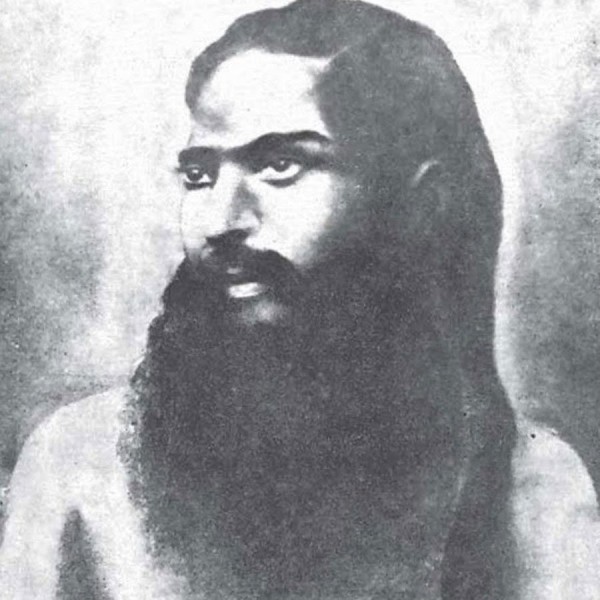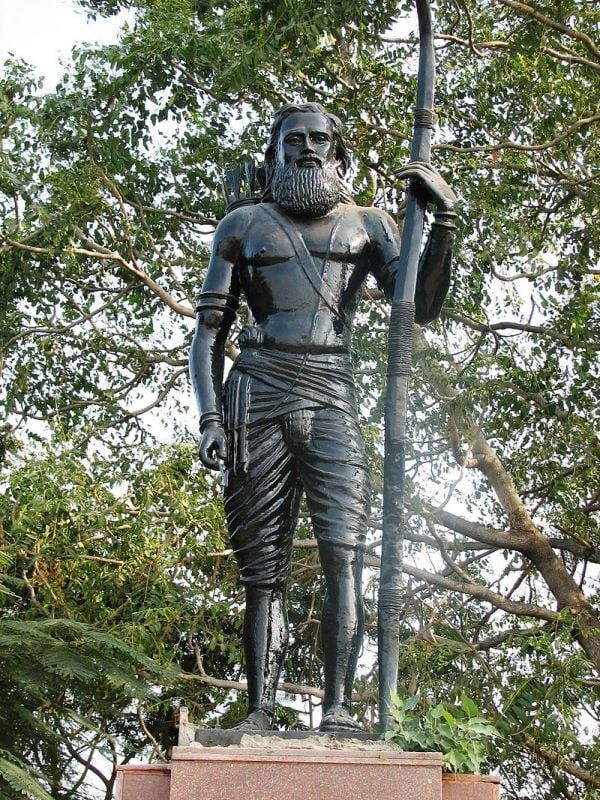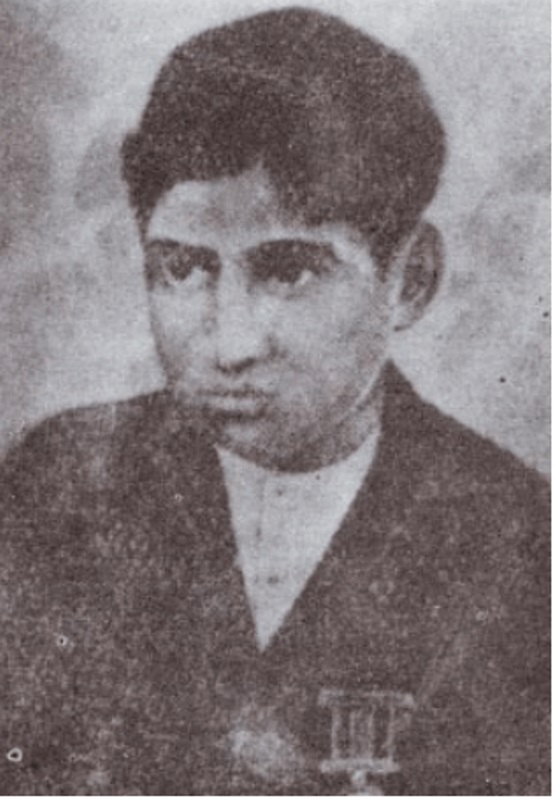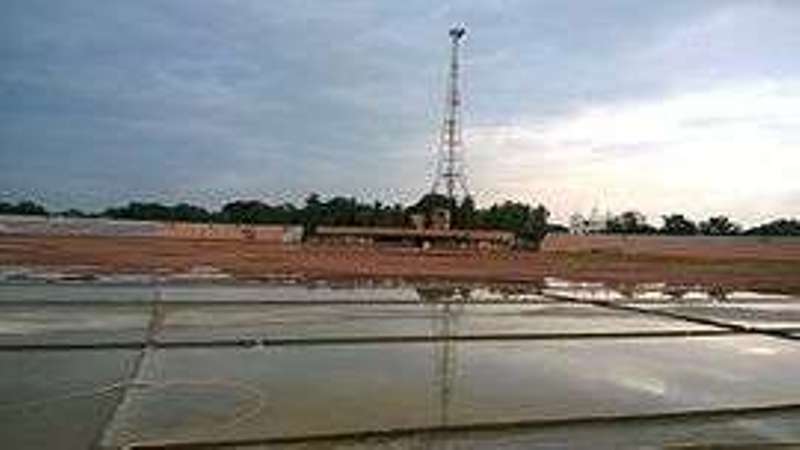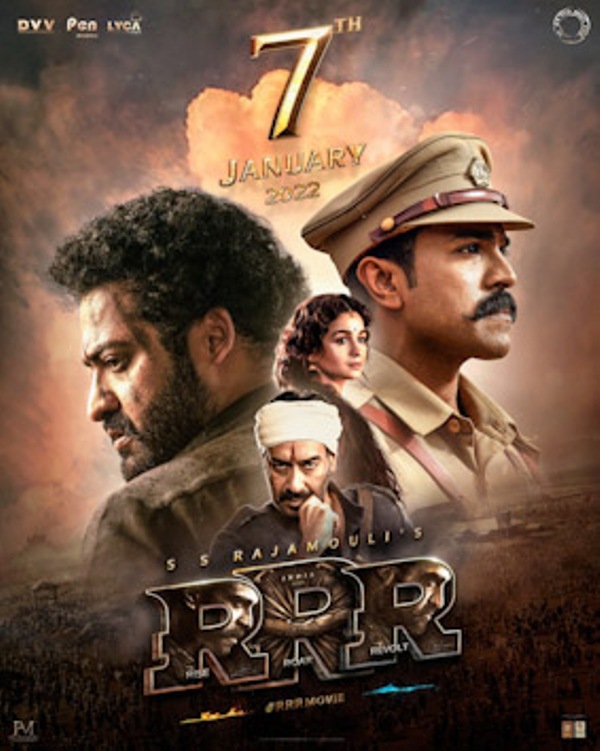Alluri Sitarama Raju Age, Death, Wife, Family, Biography & More
| Bio/Wiki | |
|---|---|
| Nick names | Rama Chandra Raju and Aluri Rampa Rama Raju [1]Inspirational Persons |
| Name Earned | Manyam Veerudu [2]Manyam Veerudu Official Website |
| Profession | Freedom Fighter |
| Known for | Being the leader of the Rampa Rebellion in 1922 which was also known as the Manyam Rebellion of the tribals at the Godavari Agency of Madras Presidency, British India |
| Physical Stats & More | |
| Eye Colour | Black |
| Hair Colour | Black |
| Personal Life | |
| Date of Birth | 4 July 1897 (Sunday) |
| Birthplace | Pandrangi, Madras Presidency, British India (present-day Andhra Pradesh, India) |
| Date of Death | 7 May 1924 |
| Place of Death | Koyyuru, Madras Presidency, British India (present-day Andhra Pradesh, India) |
| Age (at the time of death) | 27 Years |
| Death Cause | Executed by the Britishers [3]Byju's Note: His tomb is situated at Krishnadevipeta, Andhra Pradesh, India |
| Zodiac sign | Cancer |
| Nationality | British Indian |
| Hometown | Pandrangi, Madras |
| School | Taylor High School in Narsapur |
| College/University | Mrs A.V.N. College |
| Educational Qualification(s) | • High School at Mission High School, Vishakhapatnam • He learnt astrology, herbalism, palmistry and horse-riding at school. • A drop out of Mrs A.V.N. College [4]Inspirational Persons |
| Caste | Kshatriya [5]The Great Indian Patriots, Volume 2 |
| Relationships & More | |
| Marital Status (at the time of death) | Unmarried |
| Family | |
| Wife/Spouse | N/A |
| Parents | Father- Venkata Rama Raju (photographer) Mother- Suryanarayanamma |
| Siblings | Brother- Satyanarayana Raju Sister- Sitamma Dantuluti |
Some Lesser Known Facts About Alluri Sitarama Raju
-
Alluri Sitarama Raju was an Indian freedom fighter, who participated in the Indian independence movements. In 1922, Alluri Sitarama Raju started the Rampa Rebellion movement in which the local tribal people and the supporters of this movement fought against the British rule at the East Godavari and Visakhapatnam regions of Madras Presidency, in present-day Andhra Pradesh. Alluri Sitarama Raju was famous with the name “Manyam Veerudu” which means the hero of the jungle by the local people. Alluri Sitarama Raju, with the support of the local tribal people, raided several police stations of the areas such as Chintapalle, Rampachodavaram, Dammanapalli, Krishna Devi Peta, Rajavommangi, Addateegala, Narsipatnam and Annavaram and stole guns and arms after starting the Rampa Rebellion in 1922. During that time, the non-cooperation movement, which was led by Mahatma Gandhi, ignited the fire in Alluri to rob the police stations for weapons. Consequently, Alluri killed various British police officials.
- The official websites of India suggest the birthplace of Alluri as Bhimavaram tehsil in Andhra Pradesh whereas various media sources on the internet had located his birthplace as the village Mogallu in West Godavari District. Some other sources pointed to the village Pandrangi in the Bheemunipatnam legislative assembly constituency as his birthplace. The date of birth of Alluri is also disputed. Various media houses on the internet reported it as 4 July 1897, some claimed his year of birth was 1898, and some sources reported it as 4 July 1898. [6]Subaltern Studies [7]The Great Indian Patriots, Volume 2 [8]The Hindu [9]Contemporary Society
- Alluri became sannyasi (ascetic) at the age of eighteen. He learnt astrology, herbalism, palmistry and horse-riding at school. When he was studying in school, his father died. He was raised by his uncle ‘Rama Krishnam Raju’ who was a tehsildar in Narsapur in the West Godavari district. After completing his studies at Taylor High School, Alluri shifted to his mother’s hometown at Vishakhapatnam along with his sister and brother. There, he started studying at the ‘Mrs A.V.N. College’ and dropped the college in its fourth year. During his stay at Vishakhapatnam, he keenly observed the needs of native tribal people while wandering around the Godavari Agency. The tribals too got attracted to his charismatic personality, and it seemed like he possessed magical powers, holy and messianic status among them.
- In 1882, Madras Forest Act was passed that restricted the movement of the local tribal people in their agricultural lands for ‘Podu’ farming. This agriculture involved shifting cultivation. The main reason behind restricting this farming system was to induce farmers to adopt the coolie system. In coolie system, the British government and its contractors demean and exploit the local farmers by indulging them in road construction activities. During that time, the Britishers diluted the powers of the hereditary tax collectors and the rulers (de facto) of the hilly areas. These ancient rulers were granted the role of civil servants with no powers to collect taxes and not to regain their inherited positions by the British government. This resulted in the collaboration of these Indian cultivators and the tax collectors to unite against colonial rule.
- The Madras Forest Act situation led the young Alluri Sitarama Raju to raise his voice in support of the indigenous people and revolt against the Britishers in 1922. In this year, Alluri united with the tribal people to revolt against the Britishers while also accommodating the hereditary tax collectors who were unfairly treated during the colonial rule. These tax collectors were also sympathetic to Alluri’s aim and supported him rather than being selfish to revive their earlier positions. The army that Alluri formed was specifically included the tribal communities and the hereditary tax collectors who found the aim of Alluri Sitarama Raju a good step against the Britishers in India.
- Thereafter, Alluri Sitarama Raju started adopting the aspects of the non-cooperation movement led by Mahatma Gandhi from 1920 to 1922. These aspects included the promotion of controlling your thoughts, actions, and behaviour in a reasonable way, prohibiting drinking alcohol, wearing khadi, and boycotting the colonial courts while favouring the panchayat courts. In February 1922, this movement started by Alluri Sitarama Raju gradually started declining as its propaganda eventually inclined to the political consciousness and desire for change that led the British police to keep an eye on Alluri’s activities that were against the colonial rule.
- In August 1922, a mob of 500 people led by Alluri Sitarama Raju looted various police stations including Chintapalle, Krishna Devi Peta, and Rajavommangi for guns and ammunition. This robbery encouraged Alluri Sitarama Raju to recruit more men to kill the British police officers and to rob their weapons. The local people were not willing to help Alluri Sitarama Raju and his men; however, they assisted Alluri with shelter and intelligence. During these raids on the British police stations, the contemporary official reports suggested that between 80 to 100 rebels acted against the British police stations. On 23 September 1922, two more reputed British officers were killed by Alluri Sitarama Raju and his companions at the Dammanapalli Ghat that fastened the relationships of Alluri Sitarama Raju with local villagers. [10]Peasants in India’s Non-Violent Revolution In the same month, Alluri did two more attacks on the British police forces that made the British government more alert against his style of guerilla warfare. Soon, Britishers formed the Special Malabar Police Force who were trained to counter the Alluri’s fighting style. Alluri Sitarama Raju continued with his raids on the police stations at Rampachodavaram, Addateegala, Narsipatnam and Annavaram. The local villagers were allured and persuaded by the British government by offering them incentives and appraisals to provide information about Alluri Sitarama Raju and withdraw their support to Alluri; however, all these attempts were in vain.
- In 1924, Alluri Sitarama Raju was caught by the British police officials in the forests of Chintapalle. He was tied to a tree and shot dead in Koyyuru Village. Alluri’s tomb resides in Krishnadevipeta village in Andhra Pradesh.
- In 1974, a Telugu movie titled ‘Alluri Seetharama Raju’ was based on the life of Alluri. It featured the renowned South Indian actor Krishna.
- The government of Andhra Pradesh celebrates in birthday a state festival every year on 4 July.
- In 1986, a postal stamp was released by the government of India with a picture of Alluri Sitarama Raju on it to honour him for his contribution to India’s struggle for independence.
- The famous cricket stadium named Alluri Sitarama Raju Cricket Stadium in Eluru was named after him.
- A statue of Alluri Sitarama Raju was placed in the precincts of the Indian Parliament on 9 October 2017. This establishment was requested by the two Indian member parliament named Thota Narasimham and V. Vijayasai Reddy to honour the sacrifice that Alluri made for the freedom of India. [11]The Hindu Another famous statue of Alluri was placed at Tank Bund Road in Hyderabad, Telangana.
- Sheikh Abdul Hakim Jaani, an Indian author, wrote a book titled “Alluri Sita Ramaraju” on the life journey of Alluri Sitarama Raju in 2019. It is a Telugu language book.
- In 2021, ‘RRR’ a Telugu language film was announced to be released but delayed due to the COVID-19 pandemic. This film was based on the lives of Komaram Bheem and Alluri Sita Ramaraju. This film was directed by S. S. Rajamouli, and the Telugu actor Ram Charam portrayed Alluri Sitarama Raju in the film.
- Once, a renowned Indian author wrote in his article on Alluri Sitarama Raju that the British government spent over Rs. Forty Lakhs to find out the whereabouts of rebels of the Rampa rebellion. He wrote,
Raju won the grudging admiration of the British as a formidable guerrilla tactician. That the Government had to spend over Rs 40 lakhs in those days to defeat the rebellion speaks volumes about the success of the Rampa rebellion.”
- When he was young, Alluri Sitarama Raju liked to be alone and meditate. Once, he became friends with a rich boy. Raju got infatuated with the sister of this boy, whose name was Sita. Sita died too early, and after the death of Sita, Raju affixed her name after his original name. Thus, Rama Raju changed his name to Sita Rama Raju.
- Alluri Sitarama Raju developed an interest in circus feats and acrobatics when he used to ride a horse of his uncle after the death of his father.
- Alluri Sitarama Raju mastered the Telugu, Sanskrit, Hindi, and English languages even after dropping out of his studies.
- Alluri met Prithvi Singh, the famous Indian revolutionary, during his visits to the hilly mountains of Vishakhapatnam. Once, they both went to the Chittagong, now in Bangladesh, which was then popular for armoury raids conspiracy cases.
- Alluri Sitarama Raju was fond of visiting the pilgrimage places like Ganga and Godavari when he was very young.
- During his revolutionary movements, Alluri often saved the Muttadars from the clutches of the British police, thus he was considered as a saviour by the indigenous people of Telangana.
- The famous Koya brothers named Mallam Dora and Ghantam Dora who were deprived of their fertile land in Madras became his disciples when Alluri Sitarama Raju raised his voice against the British Raj in India.
- The death of Alluri Sitarama Raju distracted his school studies so much that he left his school in the meanwhile and went to the Western, North-Western, North and North-eastern India on pilgrimage.
- At the age of 13, a friend of Alluri Sitarama Raju gave him a handful of badges with King George’s picture on it. Alluri Sitarama Raju threw all the badges except one and pinned it on his shirt and said to his friend that it would remind him that a foreign ruler was crushing the lives of the Indians. He said,
To wear them is to flaunt our servitude. But I pinned it on my shirt near my heart to remind all of you that a foreign ruler is crushing our lives.”
- Once, Subhas Chandra Bose paid tribute to Alluri and said,
I consider it my privilege to praise the services of Alluri Sitarama Raju to the national movement, the youth of India should see him as an inspiration.”
- On 4 July 2022, Prime Minister Narendra Modi unveiled a 30-feet tall bronze statue of Alluri Sitarama Raju at Pedda Amiram village near Bhimavaram in West Godavari district; this was part of Alluri Sitarama Raju’s 125th birth anniversary celebrations.
References/Sources:

